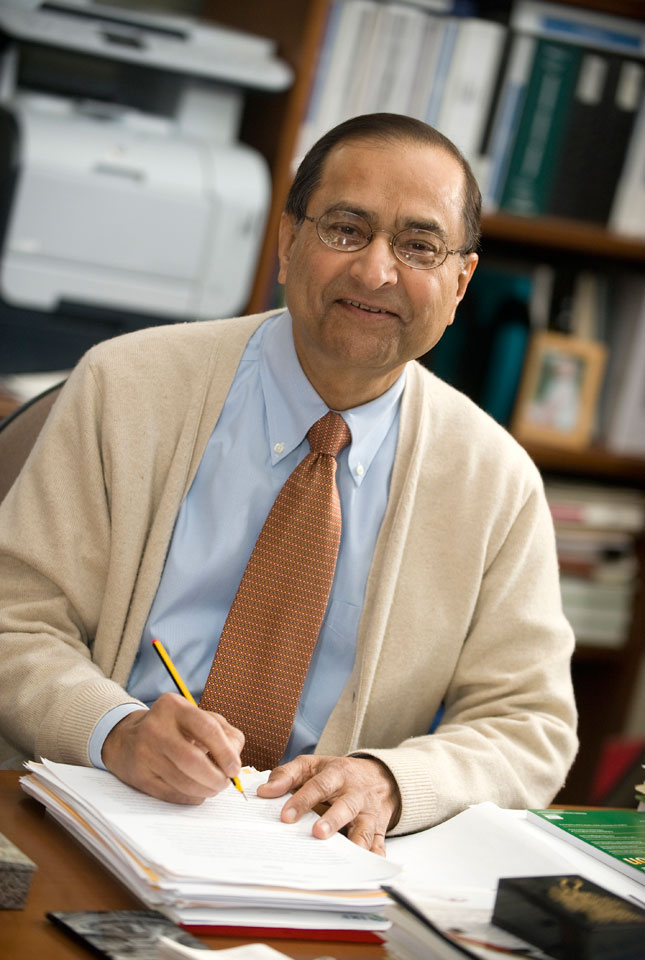A transportation engineer’s quest to improve global planning
A transportation engineer’s quest to improve global planning
| Author: | Linda Thomas Terhune |
|---|---|
| Magazine Section: | Change The World |
| College or School: | CoE |
| Article Type: | Issue Feature |
| Feature CSS: | .feature-text {
position: absolute; bottom: 25px; left: 0; width: 425px; height: 240px; background-color: #4b565a; filter:alpha(opacity=75); -moz-opacity:0.85; -webkit-opacity: 0.85; opacity: 0.85; -webkit-border-top-right-radius: 10px; -webkit-border-bottom-right-radius: 10px; -moz-border-radius-topright: 10px; -moz-border-radius-bottomright: 10px; border-top-right-radius: 10px; border-bottom-right-radius: 10px; } .feature-text .feature-title { position: absolute; top: 10px; left: 20px; margin: 0; padding: 0; color: #fff; font-size: 23px !important; text-shadow: -2px -2px 10px rgba(0,0,0,.3), 2px 2px 10px rgba(0,0,0,.3); } .feature-title .title1 { font-weight: bold; } .feature-text .feature-title .title2 { font-size: 23px !important; } .feature-intro { position: absolute; left: 20px; bottom: 15px; margin-right: 15px; font-size: 14px; line-height: 17px; font-weight: normal; text-shadow: -2px -2px 16px rgba(255,255,255,.2), 2px 2px 16px rgba(255,255,255,.2); } .more-link { position: absolute; bottom: 0; right: 0; color: #ccc; font-size: 14px; line-height: 17px; text-decoration: none; text-shadow: -2px -2px 16px rgba(0,0,0,.2), 2px 2px 16px rgba(0,0,0,.2); } |
It was one of many remote roads that Sinha, a transportation engineer, has traveled in more than four decades of his professional career, a good part of which involved consulting for the World Bank and other organizations.
Since his early days as a college student at Jadavpur University in India, Sinha has been intrigued with the challenges of human settlements. As a civil engineering professor, Sinha has acted on that interest to influence transportation engineering and planning in locales from Bangladesh to Yemen.
Sinha, the Edgar B. and Hedwig M. Olson Distinguished Professor of Civil Engineering and a member of the National Academy of Engineering, draws on his undergraduate degree in civil engineering, post graduate studies in town planning and municipal engineering, and doctoral work in transportation engineering to inform physical infrastructure development.
During six years on the faculty at Marquette University, he consulted as a systems engineer for the seven-county Southeastern Wisconsin Regional Planning Agency, developing large-scale models to analyze land use, housing and transportation policies. He has served at the state level as director of the Joint Transportation Research program in the Indiana Department of Transportation, and on the federal level as a member of several advisory panels. Also, for more than three decades he has played a leadership role in the International Road Federation in training and education of highway engineers and planners from Asia, Africa, South America and Eastern Europe.
Since the 1980s, Sinha has focused his work around the world as a consultant for the World Bank and the United Nations Environmental Program. His passport reflects 14 visits to China; time in Bangladesh, India and Nepal; several trips to Yemen, Palestine, Iran and former Yugoslavia; and the Republic of Georgia, among other places. His work in Asia included many projects ranging from expressway planning in China and India to construction of rural roads and bridges in Bangladesh.
Sinha’s relationship with the World Bank began in the mid-’80s when he was invited to develop a resource base for considering environmental and ecological impacts of land transportation; transportation is among the agency’s largest investment portfolios. In those pre-Google days, the compendium prepared by him and a team of students could be used to assess the sustainability of projects. Sustainability and economic feasibility of transportation investments are the topic of a recent book published by Sinha with his former student, Samuel Labi, now an assistant professor of civil engineering at Purdue.
Civil engineers, Sinha says, are uniquely positioned on the front lines of global challenges. With their focus on housing, water, sanitation and transportation — all vital components of human settlements — civil engineers operate at the intersection of engineering, planning and policy. Having spent much of his career focusing on highway systems, whether in planning, design, construction or financial analysis, he holds the transportation sector closest to his heart.
“Unless you have transportation, you don’t have much,” Sinha says. “Transportation is the backbone of economies.”
In addition to applying his background in planning and policy to his work as a consultant, Sinha brought his interest in policy to the Purdue campus with his role in the formation in 1978 of the Center for Public Policy and Public Administration. In addition to doing research, the center granted master’s degrees for about a decade before it was discontinued. With the creation of Purdue's Global Policy Research Institute in 2010, such programs may come to life once again.
As a professor, Sinha is immensely proud of the men and women he has sent out into the world, in academia and in public and private sectors. His students serve as heads of government agencies and ministries as well as elected officials in Chile, Egypt, Indonesia, Japan, Malawi, South Korea and Taiwan, among other countries. Several have also gone on to work with the World Bank. He says that his students are using their skill as civil engineers to drive the economies and improve the quality of life in human settlements.
“I have had tremendous pleasure in working with my students and seeing many of them enter public service,” he says. “I take comfort that they are making an impact in people’s lives.”


Comments